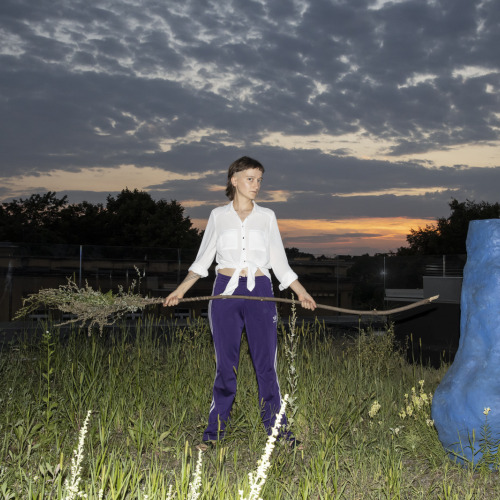
SHIRIN NESHAT
"I
am interested in making work that opens up the subject of contemporary Islam.
This subject is inseperable from revolutions and violence today. My images are
about how the Islamic population is portrayed in the world today, and about how
this portrayal may be a misrepresentation."
Shirin Neshat
The acclaimed series The Women of Allah
deals principally with Islamic women in the military and with the concept of Shahadat
(martyrdom). To Neshat, Shahadat
represents "the heart of Fundamental Islamic ideology", but she
remarks immediately that it's a concept which is hardly comprehendable
according to Western definitions. "In the West, essentially, all beliefs
are evaluated within universal criteria of rationality and truth. Those belief
systems which do not comply with Western definition of rationality are
considered "irrational". The question is how we can pass judgements
on the beliefs of other cultures when they are "unfamiliar" to us
and, in the case of Muslims are completely in conflict with our own. There is
an arrogance in this type of evaluation where Westerners always prevail as the
"right", "superior" and "progressive" and Muslims
are portrayed as "wrong", "inferior", and
"fanatic".
In the West, we also tend to overlook that
"Islamic Fundamentalism" has been the product of Western domination
and colonization of Muslim countries. And this "Islamization" has
been muslim's movement to bring back a sense of cohesion in their troubled
communities, to "purify" their cultures, to reclaim their independent
identity and to abandon Western influences. To Muslims, Islam is their only
hope for survival in a world that they can not compete with, and feel
threatened by.
I think, the condition of Muslim women
interests Westerners because they so vividly embody Muslim values, everything
that is "alien" about that culture and that we don't understand. The
media's selective abd obsessive coverage of Muslim women is to sensationalize
subjects that interest the Western Public by characterizing Muslim women as
"submissive" and "weak" and Muslim men as
"barbaric" and "violent" men. The media serves two purposes
here: firstly it validates the myth that the West is ultimately
"correct" in every aspect of civilization, including the way they
treat their women; and secondly: it perpetuates the "orientalisation"
of Muslim characterization, as they maintain a "fairy-tale" image of
their lives without real consideration for "truth"."
In her large-size (40 X 60 inch), black and
white portraits of Iranian women, Neshat explores the stereotypical
characterisations of Muslim women. Three
recurring elements: veiled women, the presence of a weapon, and on the unveiled
body-parts: Farsi calligraphy. Neshat selected extracts from poems by
contemporary Iranian women writers. Like the writings by Forough Farokhzad (who
lived through the Shah's period, and) "whose writing is extremely personal
and non-political. She wrote openly about women's emotional and sexual desires
at a time that no other woman has dared to." Or the poetry by Tahereh
Saffarzadeh (inspiritional to Neshat's The Women of Allah series) which "is
religious and expresses little about her personal world. Tahereh was intensely
involved with the Islamic revolution and her writing is mostly about her love
affair with God and Islam".
Neshat's pictures are paradoxes. One the
one hand we see the "orientalist" stereotypes: seductive, erotic,
innocent. On the other hand, we see proud, militant, armed and dangerous women.
"Each image is constructed to magnify the contradictory forces of
spirituality, beauty and innocence on the one hand with cruelty, violence,
hatred on the other, co-existing within the complex structure of Islam".
But Neshat is no preacher. She does not
attempt to glorify shahadat, but merely "tries to understand it within its
Islamic context". She does not resolve the paradoxes she presents. Her
intentionally ambiguous and puzzling work invites us to rethink our
stereotypical perception of the Other, and draw our own conclusions.
In this sense the artist -- who grew up in
Iran, but was educated and lives in the US -- is more of a mediator. A
mediator, not just between different opinions, but between radically opposed
point-of-views. In Iran, arch-enemy number one is the US. For most Americans,
Iranian culture represents a stone-age mentality, a culture of fundamentalists,
extremists, Fatwah's and ayatollah's.
Neshat's work is a self-critical discourse,
a discourse by the self who is "simultaneously comfortable and
uncomfortable" Here, as well as There.
"More and more artists are beginning
to act as social critics and offer very interesting and intelligent readings of
our societies that would be otherwise difficult to tackle with words. (...)
each artist's personal, educational and ethnic background plays a critical role
in the context of his/her art. We respond according to the way we view the
world and understand the potential of art. In my personal work I use Western
methodology, borrowed from the history of conceptual art, to engage in a
non-Western narrative. I use art to explore, to learn and in the process inform
others of what I discover. My intention however is not to be
"correct" or to "preach". I generally don't believe that it
is the artists' place or responsibility to be correct and differentiate between
right or wrong. For that reason, I am extremely unconfortable with politically
correct art".
(*) All
quotes are by Shirin Neshat, and are extracted from: "The Politics of
Spirituality: Speaking with Shirin Neshat", by Anne Kirker, in Photophile,
november 1996; and "Shirin Neshat: Armed and Dangerous", by Octavio
Zaya, in RUDE, Spring 1996.
Exhibition
presented by: City of Women & Moderna galerija Ljubljana
Supported by: Soros Center for Contemporary Arts -
Ljubljana


